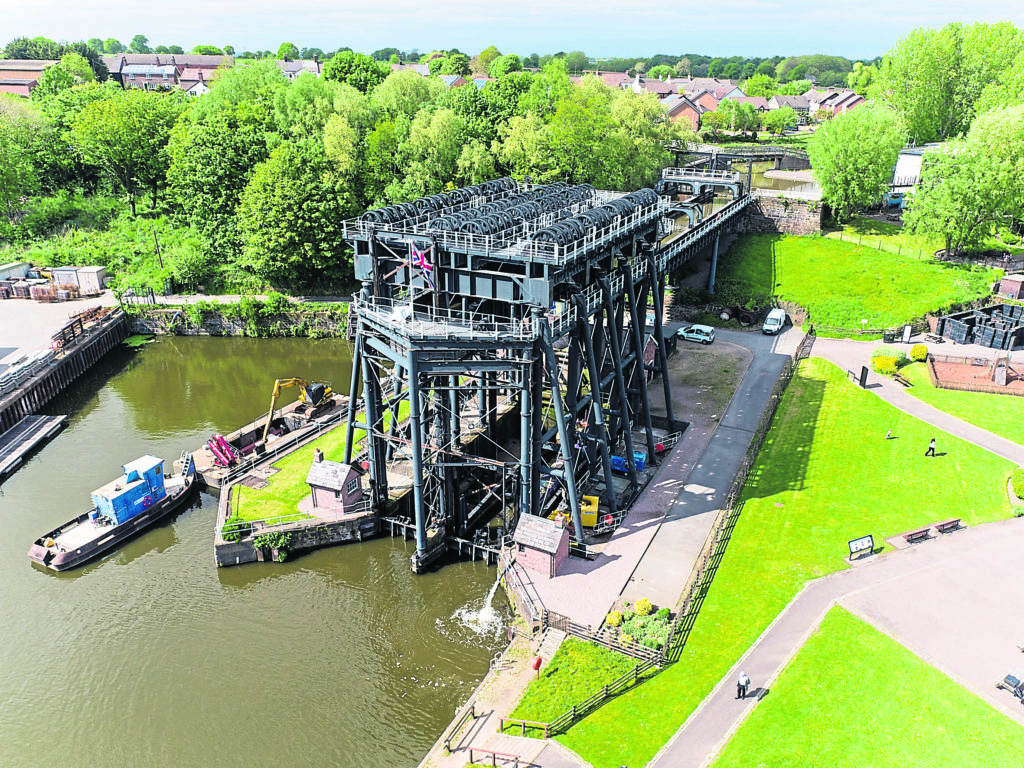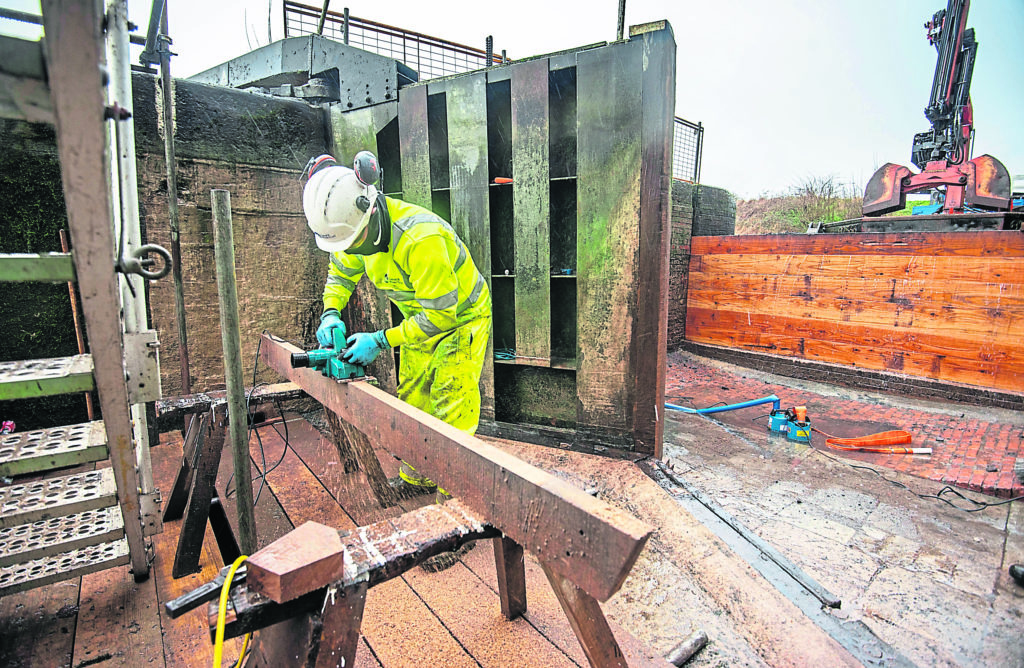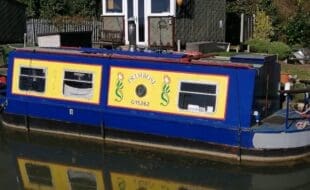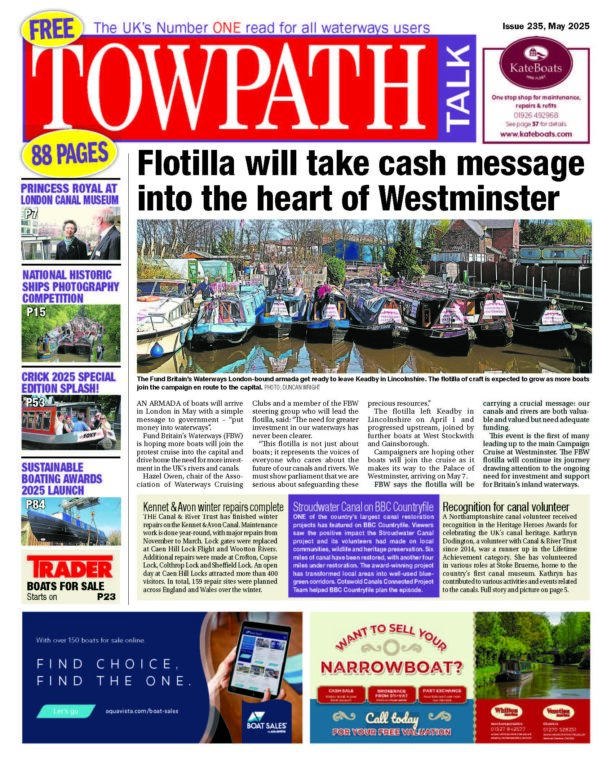In the third article about how the Canal & River Trust maintains its 200-year-old system, national boating manager Matthew Symonds looks at some of the challenges that lay ahead.

THE canal network is one of the nation’s greatest regeneration stories. From losing many hundreds of miles of waterways in the last century as canals stopped being used to transport freight, in recent decades they have experienced an extraordinary renaissance.
Today there are more boats on the canal network than at the height of the Industrial Revolution and the network provides vital green space by water and access to nature to more than 10 million people each year.
At the Canal & River Trust, we’re proud to be part of that success story. The ongoing maintenance of our canals is at the heart of the work we do, keeping the assets as sound as possible, the infrastructure safe, and the waterways available for navigation. With limited financial resources and with the cost of looking after ageing canals increasing, our rigorous planning process takes in all aspects of risk, targeting the work where it’s needed most, while retaining the flexibility to carry out emergency repairs when necessary.

The 250-year-old network, which includes the third largest estate of listed structures in the country, is vulnerable to the increasing impact of climate change and increasingly frequent extreme weather events.
And all the restoration that took place at the turn of the millennium means many of our lock gates, which have a working life of around 25 years, will need to be replaced or have their lives extended. It is more pressing than ever that sufficient ongoing investment is required to keep the canals open and safe for boats, people and wildlife.
Faced with these challenges, we are having to be more innovative and find ways to work more efficiently. We’ve begun a review of how we carry out our operations and maintenance to make it more efficient and effective. We will be working with our teams, volunteers, and with boaters and other stakeholders who use the canals the most over the coming months, to hear new ideas on how we could do things differently.
Long-term plan
We have already begun working towards longer-term planning, with the intention of being able to give three years’ notice of the largest-scale stoppages. While the bulk of our repair work has been carried out over the winter months when there tend to be fewer boats cruising, longer-term planning, that offers plenty of notice to boaters, could enable us to run a year-round maintenance programme. We’d ensure boaters and hire boat companies would have sufficient notice and options to plan alternative routes, and we’d be able to benefit from kinder weather conditions and more hours of daylight.

Another possibility would be to close longer stretches in quieter locations to carry out all the necessary works in the area, leaving it free of disruption for years after. We’d be able to save money by bringing all our equipment and materials and working along the cut rather than returning multiple times to nearby sites. This wholesale approach could transform these stretches, without boaters having the frustration of seeing one lock repaired only to run into trouble at the next one.
We are also looking to take advantage of other works and carry out repairs when canals have already been drained. This is already taking place in some areas, with repairs carried out across the north last summer when some canals were closed due to the drought. Active, joined-up planning will help us identify where these synergies exist.
It’s important to hear the views of boaters. Our Navigation Advisory Group, which is made up of independent boaters, has a subgroup that focuses on locks. They have been integral in coming up with new ideas for how we can be more efficient, without losing the special character of the canals. They have worked with us to establish how we can refurbish locks to make the gates last longer instead of carrying out full replacements. This could be by replacing the collars, or adding bespoke metal supports to weakened heels, which can add years to the life of a lock gate.
Gate efficiency
The teams at our specialist lock gate workshops have also been looking at ways to be more efficient.
Work is ongoing to create standardised templates for lock gates. While each gate is unique in terms of its precise measurements, different waterways often use the same gate design. If we can develop templates for different waterways, it could save workshops time and money when it comes to crafting new gates.
It’s important to keep heritage considerations in mind when we’re thinking of how we could make changes to the design of lock gates. The classic lock, with its timber beams painted black and white, is an iconic feature of the nation’s landscape. Any new ideas have to respect the important heritage of the canals, while balancing the needs we have, as a charity, to safeguard the future of the ageing network.

A recent saving has been to save painting metalwork below the waterline, which has saved enough time over the year to make an extra set of gates. This retains the characteristic look while having no impact on the overall resilience of the gate.
We know there are some huge challenges ahead. For example, 20 years after it was restored, Cheshire’s Anderton Boat Lift, the ‘cathedral of the canals’, needs to have an overhaul: We’ve recently been adding additional safety systems on the gates and doing major maintenance on the hydraulic cylinders. In the longer term the control system needs updating and a full repainting of the cast iron structure is required.
We’ve been planning for this through extensive investigations while the lift was closed last winter, building up a logical approach to the repairs that are required. We’ve been successful in the first round of pursuing funding from the National Lottery Heritage Fund as the work will cost many millions to complete – and the bid includes improving the overall customer experience at the site.
And Anderton is just one of the thousands of structures–many listed, and many forming an essential part of national infrastructure – that we care for, day in, day out, year on year. We have to adapt if we want to ensure the future of the canals, and the future of boating on the inland waterways. We’re confident that the changes we’re making will help us work more efficiently and make the most of the tools and resources we have to hand.
But there’s only so much we can do in the current climate. We’re calling on boaters to continue to support us, to share the importance of canals with others and to help by lobbying their local MP and backing our campaign for appropriate funding. Together, we can help secure a future for canals for the next 250 years.
#canalandrivertrust #CRT #towpathtalk #canals #canalsandrivers #narrowboat #rivers #waterways #lifeonthecut #boating #boats #canallife #canallifeuk





